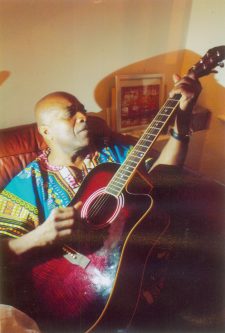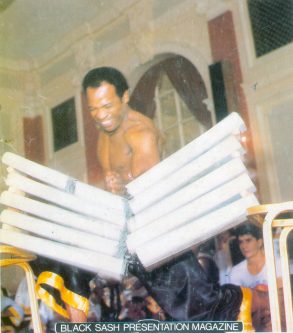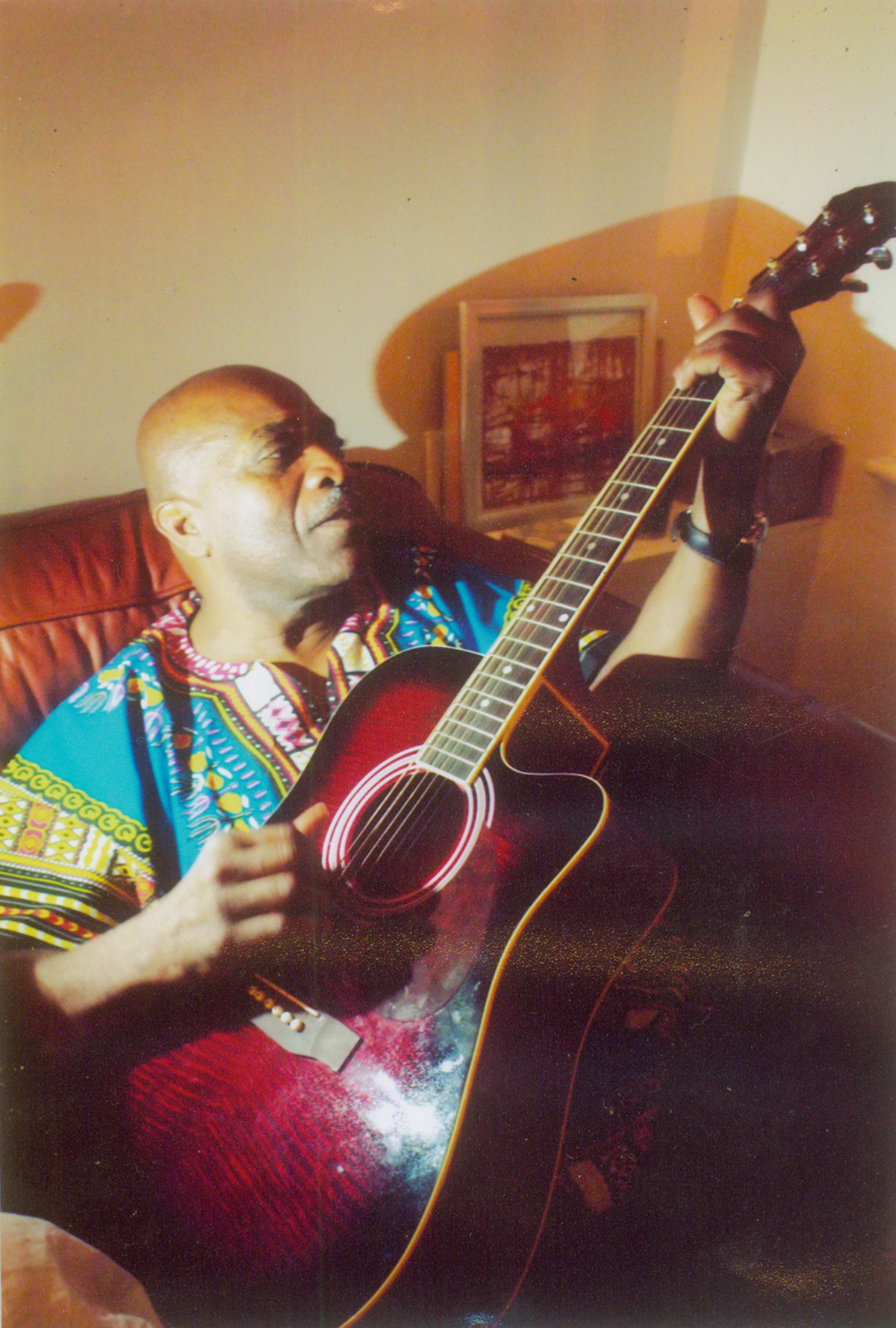This week, Roger Seymour stepped away from his search of West Indies cricket and sat down with coach of the 12-time defending champs of the Caribbean Area Squash Association (CASA) Junior Championship, Guyana, Carl Ince, for an in-depth look at how he became a coach. The CASA Junior Championship concluded yesterday in Georgetown.
Fifty-seven years ago this month the SS Arakaka, a Booker’s sugar boat developed engine problems in the Azores, a small group of volcanic islands in the North Atlantic Ocean, thus delaying the ship’s arrival in Liverpool, England. On board were two brothers, Leslie and Carl Ince, 18 and 16 years old, respectively, on their first trip away from then British Guiana.
The teenagers were on their way to join their dad, William Proctor Ince, called ‘Turner’ by everyone, a World War II veteran, who had been injured during the war and had settled in Manchester. The Inces had left their mother and six younger siblings – two brothers and four sisters, from their mother’s second marriage – behind in their village of Plaisance, East Coast Demerara.
Memories of growing up in the village lingered:

“Don’t let me catch you or hear you cross the line top, children!!” was the almost daily reminder from his mother of the danger of the tracks of the railway line which divided the community into north and south, the demarcation boundary beyond which one never ventured, in thought or body as the train which passed through was an express and there were no gates.
Despite being an Anglican and attending St Paul’s Church on Sundays, Plaisance Methodist School was the only education institution Carl had known for it was south of the railway line.
During the suspension of the Constitution in 1953, he recalls looking through the kitchen window and his eyes “making four” with the British soldier from the Black Watch regiment, standing in the yard, bayonet at ready, as the house was searched for communist publications.

His uncle Maurice Fernandes had introduced him to the benefits of exercise, fitness and strength training; his early exposure to strands, dumbbells and dynamic tension would serve him in good stead for the rest of his life. “Don’t waste time, make use of it,” was another of his mother’s instructions.
The Ince brothers arrived on July 26, and began pursuing their initial plan, despite their father’s protests who wanted them to further their education. Their immediate objective was to bring the rest of the family to England. Their game plan was simple and would become their modus operandi for the rest of their lives. Set a goal, work hard, save, work hard, save, achieve. Set a new goal, repeat formula.
Within a year, their mother, Rose had arrived in England, and as a result of their combined efforts, within four years the rest of their siblings had joined them. The first boundary had been crossed, whilst still managing to explore other avenues. Carl had continued to exercise, pursuing non-competitive bodybuilding whilst maintaining discipline of body and mind. Within two years of his arrival, he learnt to play the guitar, an interest he had quietly harboured for a long time.
On a casual audition for a band, Carl impressed the leader by playing the recently released, very challenging version of “Maria Elena” by a Brazilian duo, two brothers better known to the world as Los Indios Tabajaras, which was very popular on the UK single charts at the time. The new lead guitarist joined the previously all-Jamaican band which played American soul, rock and roll and Bluebeat. The latter was actually early ska, but many followers in the UK referred to it by that name, as most of the music was recorded on the Blue Beat record label.
Initially, the band played on the weekends, driven across England by none other than the diminutive former West Indian fast bowler, Roy Gilchrist who was ready to defend his bandmates at any time. Eventually, the band found a home in a club, playing six days a week, yet Carl continued to hold down a routine day job. There were no boundaries on his mind and body. There was no time to waste. Five years after arriving in England, he had purchased his first home.
A young Bajan body worker and follower of the band approached Carl about going into a partnership in a garage. Twenty-one years old, with no knowledge of cars, the thrifty musician ventured into the world of entrepreneurship. He flung himself into the new field with his usual aplomb, his mind absorbing everything he could learn about cars, engines, panels, bodywork repairs, hardly noticing the lack of contribution by his more knowledgeable partner. As most often happens in partnerships, there was a parting of ways, with Carl moving onto his own larger garage, after a few years.
Carl had remained in Manchester since arriving in England and had met his future wife Margaret within a few years of his arrival. They had started a family which would eventually grow to a boy and three girls, Craig, Susan, Caren and Lauraine. With his own business to manage and the growing family, his time with the band came to an end.
Carl’s business eventually expanded to include taxi cabs and long distance haulage and he fulfilled duties behind the steering wheel whenever things slowed down in the body shop. This provided an opportunity to see England.
His brother, Laurie, who lived in London, introduced him to the world of martial arts. It was the early 1970s and the Bruce Lee films, Enter the Dragon, Fist of Fury and The Way of the Dragon had gained his attraction, and Carl would pursue this new world with his usual dedication, travelling 200 miles (each way) from Manchester to London every weekend to train.
In London, under the guidance of C K Chang, a Malaysian sensei, Carl excelled at an alarming rate in grasping the ancient Chinese art of Kung Fu, even being given permission after six months to start instructing. Within the relatively short span of three years, his initial blue sash had been replaced with that of a first Dan. Senseis Laurie and Carl eventually started their own school, Sam’ Tu-Dang, (Triangle of light) which taught a combination of kung fu, tai chi and judo.
At their annual presentations, Carl would demonstrate his expertise by breaking nine concrete blocks with a single chop. Initially, he would use his right hand but was later forced to switch to his left after breaking the right one.
His introduction to squash came via a taunt. A squash player saw him teaching a martial arts class in a gymnasium and suggested to him that he wasn’t even fit and that he wouldn’t last five minutes with him on a squash court. He accepted the challenge, but confessed with his usual easy laughter, “Five minutes? I didn’t even last three. Couldn’t get up off the floor, I was done.”
The fitness fanatic and martial arts expert had found a new challenge to engage, and like the previous ones he pursued it relentlessly. Although coming to the sport at a later stage in life than most, he developed into a decent club player, bearing in mind that the standard of squash in England is extremely high.
“I never had any intentions of coaching until one day someone asked me if I would be interested in coaching…,’’ he said.
Next week, Coach Ince returns home.

